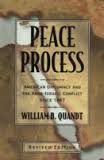The West Bank was declared part of Jordanian territory after Israel and Jordan signed armistice agreements in 1949. After the 1967 Arab-Israeli War, the area remained under Israeli occupation. Conflicts with Arab residents there grew in the late 1970s as Israeli Jewish settlers, encouraged by the Begin administration, began a series of large-scale housing developments. Although the Camp David accords (1978) incorporated plans for Arab self-rule in the West Bank, this goal remained elusive.
Israel’s incursion into Lebanon in 1982 to destroy Palestinian armed bases exacerbated rioting and political turmoil in the West Bank. Israel responded with military curfews and increased Israeli troop presence. The development of the Intifada (Palestinian uprising), which began in the Gaza Strip in 1987, embroiled the West Bank in outbreaks of stone-throwing, protests, and violent attacks and led to Israeli reprisals, resulting in hundreds of Palestinian deaths, property damage, high unemployment, and reduced living standards.
An accord between Israel and the Palestine Liberation Organization (PLO), reached in 1993 after secret negotiations, led to the establishment of the Palestinian Authority and limited self-rule in the West Bank and Gaza Strip in mid-1994. Agreements providing for a transfer of control to Palestinians in the West Bank town of Jericho and the Gaza Strip, and then in the other West Bank cities and towns (except East Jerusalem), were finalized in 1994 and 1995 and largely implemented by early 1996. In Mar., 1996, Israel sealed off many towns in the West Bank following a series of suicide bombings inside Israel. Most of Hebron was handed over to the Palestinians in 1997 and, in a 1998 accord, Israel agreed to withdraw from additional West Bank territory. Although progress was slow, this was accomplished by Mar., 2000. Any chance of further progress was stymied by a new cycle of violence that began in the fall after Ariel Sharon visited the Haram esh-Sherif (or Temple Mount) in Jerusalem.
In this six-minute video, Danny Ayalon (Israel’s former Deputy Foreign Minister) explains where the terms “West Bank”, “occupied territories” and “67 Borders” originated and how they are incorrectly used and applied in many of our modern discussions of these issues.







_17422494921.png )

